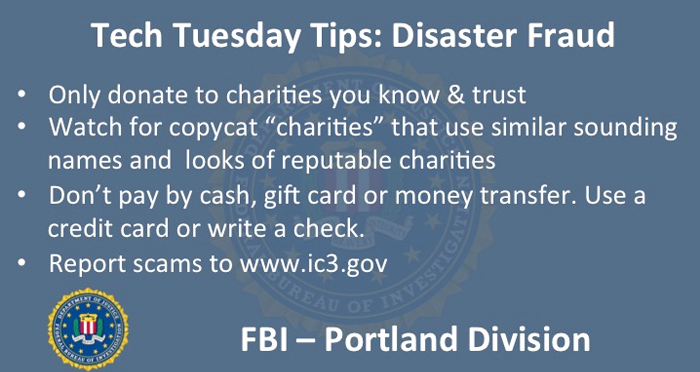With Hurricane Florence hitting the east coast last week… and the on-going disaster recovery efforts stretching from Hawaii to Puerto Rico… you need to be able to tell the legitimate charities from the frauds.
It is no secret that charity scams spike after significant events, particularly natural disasters. The news and your social media feeds are filled with photos of chaos and destruction. You feel helpless, and the fraudster knows it.
These criminals will create fake social media accounts and websites to make it easy for you to give. Just click the link, and you will feel like you’ve made a difference. Unfortunately, if you pick the wrong organization, those most in need will never see your donation.
Along with the Federal Trade Commission, FEMA and other partner agencies, we offer these tips for safe giving:
Donate to charities you know and trust.
Designate the donation to go to a specific disaster relief effort as opposed to a general fund.
Never click on links or open attachments in unsolicited e-mail or social media posts.
Verify the legitimacy of any e-mail or social media solicitation by contacting the organization directly through a trusted contact number.
Beware of organizations with copycat names similar to, but not exactly the same as, those of reputable charities.
Avoid cash donations if possible. Pay by credit card or write a check directly to the charity. Do not make checks payable to individuals.
Legitimate charities do not normally solicit donations via money transfer services. They also won’t ask for donations via gift cards.
Most legitimate charity websites end in .org rather than .com.
Make contributions directly, rather than relying on others to make a contribution on your behalf.
Those affected by recent disasters can use your help – and there are plenty of legitimate charities out there to do that work. You just need to do your research before giving.





